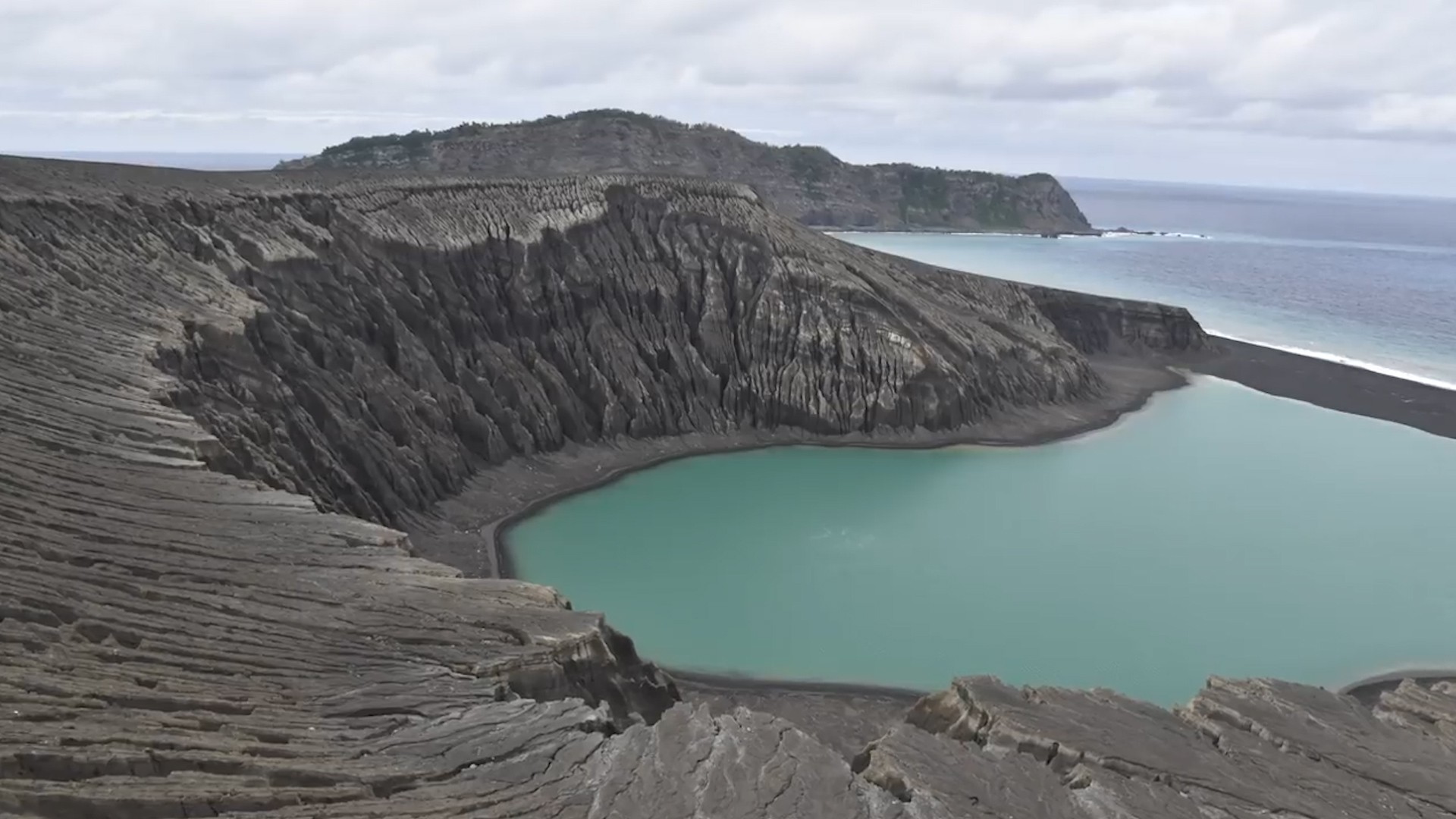When an underwater volcano erupted in 2015 and formed a small island in the South Pacific, NASA caught the whole spectacle on tape.The satellite footage of the island’s formation, the first of its kind, offers NASA an unprecedented look at how land forms — and it could provide a roadmap for discovering ancient life on Mars. Since the island’s topography matches some formations on Mars, scientists can look to similar formations on the red planet for evidence of water and volcanic activity. If there was ever life on Mars, the evidence would likely exist near those spots.“I think these small islands, small volcanic islands, freshly made, evolving rapidly are windows into the role of surface waters on Mars as they have affected small landforms like volcanoes — and we see fields of them on Mars,” said Dr. James Garvin, NASA’s chief scientist at the Goddard Space Flight Center, in NASA’s video. The new island, named Hunga Tonga-Hunga Ha’apai, stands in a remote section of the South Pacific, between two other islands in the Kingdom of Tonga, about 450 miles southeast of Fiji. It’s a little less than a mile above the surrounding the sea floor and about two kilometers long and one kilometer wide — though it’s still shifting and settling.Scientists had only expected the island to last a few months, but they think warm seawater helped to harden the ground. Nearly three years later, the island’s still around, and scientists now estimate it could last another 30 years.When the volcano blew, the explosion sent volcanic ash up to 30,000 feet in the air and was visible miles around. Flights were even diverted around it. While volcanic activity is fairly common in the South Pacific, the island’s formation by volcanic explosion isn’t. Only three islands have been formed the way this one was in the last 150 years.READ: Find out which glacier could put your city underwater
The new island, named Hunga Tonga-Hunga Ha’apai, stands in a remote section of the South Pacific, between two other islands in the Kingdom of Tonga, about 450 miles southeast of Fiji. It’s a little less than a mile above the surrounding the sea floor and about two kilometers long and one kilometer wide — though it’s still shifting and settling.Scientists had only expected the island to last a few months, but they think warm seawater helped to harden the ground. Nearly three years later, the island’s still around, and scientists now estimate it could last another 30 years.When the volcano blew, the explosion sent volcanic ash up to 30,000 feet in the air and was visible miles around. Flights were even diverted around it. While volcanic activity is fairly common in the South Pacific, the island’s formation by volcanic explosion isn’t. Only three islands have been formed the way this one was in the last 150 years.READ: Find out which glacier could put your city underwater
Advertisement
